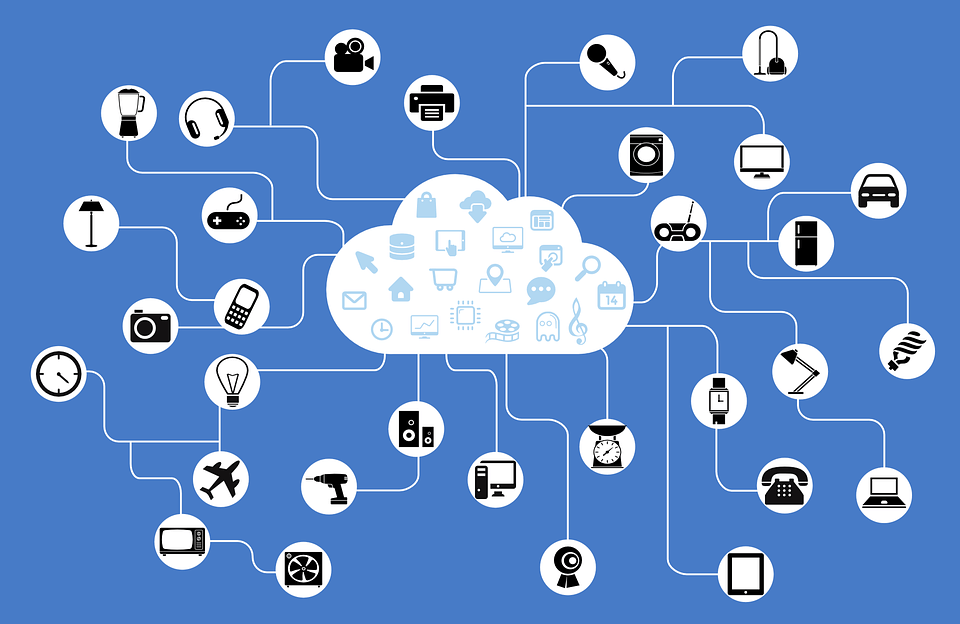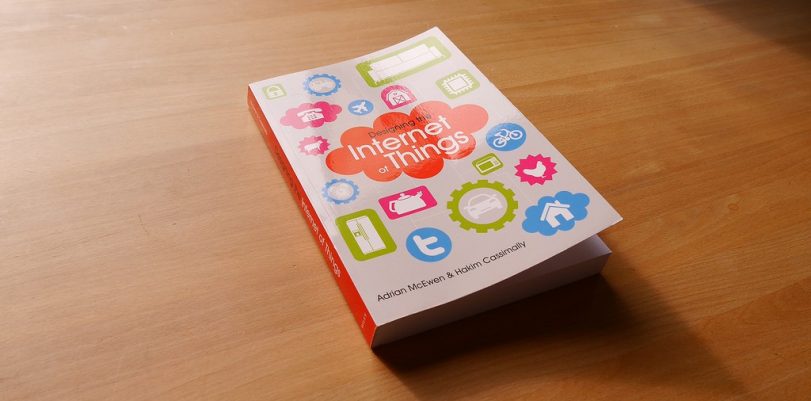If you thought the Internet was the peak of the human inventions, you couldn’t be more wrong. How about connecting and establishing networks and communications to all of the gadgets, devices and house stuff that we use every day? Now we are talking.
Nowadays, these new inventions and equipment have gotten to the point that they don’t surprise us. The human mind and the power of technology, development, and manufacturing are such that we can enjoy automated driving vehicle, navigation systems, smart houses and even “intelligent” fridges, dishwasher and laundry machines.
All of that is courtesy of the Internet of Things, abbreviated as IoT. They provide users with a wide array of possibilities in life, and they are designed to make our days easier in some way or another.
The Internet of Things concept, although it has already brought us smart bulbs, sleep monitoring machines, wireless music devices, and hundreds of other uses and applications, still looks promising for the future. We haven’t seen the best of it yet.
However, as everything that uses the Internet in this planet, there is a dire need of securing the data flow of these gadgets and devices. Because of that, we will use this article to highlight how VPNs, or Virtual Private Networks, can protect IoT devices with robust encryption and the most efficient protocols.
The Internet of Things: “Smart” it up!
The Internet of things (IoT) can be defined as the network of physical devices, gadgets, vehicles, home appliances and other items surrounded with sensors, electronics, software, actuators, and connectivity.
The connectivity and established networks provide a perfect atmosphere for these gadgets and tools to exchange data. A computing system acts as the “identity” of each device, and it can interact and inter-operate with previously configured external Internet infrastructure.
The number of IoT based devices is rapidly increasing around the world. Between connected cars, smart appliances, and home equipment, there are currently more than 2-5 billion units that fall under this category. In ten years, the number may have doubled.
Despite its already enormous achievements as a field and industry, the IoT still has vast potential to grow towards more applications and uses; for example, we haven’t seen it all regarding business and productivity, medicine, and security.
The last item is crucial: IoT based device developers know that if anything connects to the Internet, shady people will try to get their hands on it and “hack” it, causing potentially devastating losses to owners of these gadgets, depending on what they have to lose.
Known IoT devices
- Bitdefender BOX IoT Security Solution
- Google Home Voice controller
- Amazon Echo (2nd Generation) Voice controller
- Nest Cam Indoor camera
- Coffee Smart Coffeemaker
- SmartMat Intelligent Yoga Mat
- Philips Hue Hue Go
- TrackR bravo Tracking Device
- Linquet Bluetooth tracking sensor
- Amazon Echo Spot Smart Alarm Clock
- BB8 SE Droid with force band
- Nest Thermostat Smart Thermostat
- Amazon Echo Plus Voice controller
- Logitech Pop Smart button controller
- Nest Cam Outdoor Outdoor camera
- AWS IoT Button Programmable Dash Button
- Logitech Circle Portable Wi-Fi video camera
- Logitech Harmony Elite Smart Controller
- Awair Smart Air Quality Monitor
- Nest Protect Smoke and CO detector
- Navdy Smart navigation system
- Hydrawise Smart Irrigation Controller
- Sync Smartband Activity Tracker
- Ninja Sphere Smart Household Appliances
- Airfy iBeacon for home automation
- June Intelligent oven
- August Outdoor Camera
- Singlecue Gesture Controller
- Triby Smart portable speaker
- Kinsa Smart thermometer
- Ring Pro Smart Video Doorbell
- Withings Blood Pressure Monitor
- Fitbit Surge Smart Watch
- August Smart Lock
- Scout Alarm Home Security Sensors
- Canary Home Security Device
- Eero Home WiFi System
- Amazon Echo Connect
- Norm Connected Thermostat
- Honeywell Wifi Smart Thermostat
- Chamberlain Garage Appliances
- Blossom Smart watering controller
- Edyn Garden sensor
- iGrill Mini Smart grill thermometer
- iGrill 2 Smart grill thermometer
- Mimo Smart baby monitoring
- Skydrop Sprinkler Controller
- Ambi Climate Add-on for Air Conditioner
- MaxMyTV TV Home Automation
- Notion Home Intelligence Sensors
- Ring Smart Video Doorbell
- Aura Connected Alarm Clock
- ZEN Thermostat
- Kepler Gas and CO detector
- Sense Sleep Tracker
- Iota GPS Tracking Device
- Hicon Wearable Smart Bracelet
- Table Air Purifier
- Amazon Tap Portable Bluetooth speaker
- PulseOn Heart Rate Monitoring
- Keen Home Smart Vent System
- Petnet Automatic feeder
- Lockitron Bolt Smart Lock
- Parrot Wireless plant monitor
- Denon Heos Wireless speaker system
- Sight Wireless baby monitor
- Foobot Indoor air quality monitor
- Sonos Play:5 Smart speaker
- Click & Grow Herb garden
- Beddit Sleep tracker
- Misfit Bolt Bluetooth smart bulb
- Arlo Home security camera
- Sphero 2.0 Robotic ball
- Sugr Cube Smart wifi speaker
- Muzo Cobblestone Wireless music receiver
- SkyBell Smart video doorbell
- Prodigio Connected espresso machine
VPN for your IoT devices: your security matters!

If you have Internet-powered devices at home, the last thing you need is someone hacking it and taking advantage of security loopholes. The best thing you can do to prevent this is hiring the services of a reliable VPN provider.
VPN is the short version of Virtual Private Networks. They are resources that apply encryption protocols and measures to protect your data, traffic and IP address from the advances of hackers, viruses, governmental spying, and other external agents that may want to toy with your online content.
These resources are known for providing security and privacy to those who hire them. VPNs can hide your IP address and lend you a new one for the time of your session, and the best part is that you can select to connect from a server from any country that your particular client has available.
In addition to security and privacy, VPNs can also spoof your locations and open up unlimited streaming and browsing possibilities. You can be in any part of the globe and access services from abroad that would be blocked under normal circumstances.
Since you can’t directly configure your VPN provider on your IoT based device, you would need to set it up on your router. That way, they will gain protection and security because the whole home network will work under the VPN shielding.
The encryption that a tool like VPN provides can help authenticate devices and make sure the data transferred is protected and not easily reachable from any cybercriminals looking to snatch it.
How to use VPN to secure your IoT based devices
As we have already said, the way of using VPN to defend your IoT based devices is by setting it up on your router. That way, all Internet traffic in the place will gain protection, security, and privacy. Here is what you need to do:
- Sign up for one of our recommended VPN services, by going to the website and providing a payment method and personal information. For this example and explanation, we will use Private Internet Access (PIA).
- Log in to the Client Control Panel.
- Go to the section that shows PPTP/L2TP/SOCKS Username and Password.
- Select “Generate Username and Password.”
- Go down to the page. You will now see a PIA username and password, distinct from the one you enter at the login phase.
- Use that information to “sign in” to your router. Try 192.168.1.1, unless you use the ASUS brand, in which case you need to go to router.asus.com.
- Go to Advanced Settings.
- Select “VPN.”
- Select “VPN Client.”
- Select “Add Profile.”
- Choose the PPTP tab.
- Enter your login information.
- Use the default server “us-east.privateinternetaccess.com.” You can also select a server from https://www.privateinternetaccess.com/pages/network/.
- Select MPPE128 for PPTP. Setting it to Auto does not guarantee connection.
- Select OK.
- Return to the VPN Client section.
- Select Activate.
- Done! You are now connected to PIA VPN via your router.
Measures to ensure that you are safe in the online world
- Keep your Wi-Fi and router up to date, because this guarantees that you will have the newest patches and tools to combat viruses and hackers that your routing device fabricant develops.
- Try to avoid routers supplied by your Internet Service Provider at all costs.
- Tone down data sharing with any software, device or website you get in contact with while you surf the web or use your IoT gadgets.
- Make sure to disable Bluetooth when you are not using it.
- Establish robust, hard-to-guess passwords for your IoT devices.
- Stay away from GPS geo-location if you can.
Best VPN to use for securing your IoT based devices
- TorGuard: The gold standard regarding encryption in the VPN market. TorGuard implements all the primary and most widely used protocols (IKEv2, OpenVPN, L2TP/IPSec,) and makes sure to keep or share absolutely no logs of your data. It also sells pre-configured routers with the VPN service so that you can use them for your army of IoT based gadgets. It costs only $9.99 per month and allows five connections at the same time.
- IPVanish: Another option that sells pre-flashed routers ready to install and use with your IoT powered devices, IPVanish provides the fastest VPN service in the field. At $10 per month, it is also affordable, although not cheap. It connects to 60 countries through 750 servers, and it offers exciting features such as various configuration options, a kill switch, DNS leak protection, and a no logging policy.
- Private Internet Access: As you can see in this guide, PIA is perfectly suitable for your smart devices at home. You can easily install it on your router, and you will gain top-end protection and privacy. On top of all that, PIA is one of the most affordable VPNs, at $6.95 per month, although there are discounts in the long-term plans that can drive down the price to $3.33.
- GhostVPN: GhostVPN works perfectly with IoT devices, and it has unlimited bandwidth, speeds and server switching. Users can enjoy features such as stealth VPN, 1,600 servers, 51 nations to connect, and a 15-day money-back guarantee, not to mention the implementation of all the major protocols.
In conclusion, the Internet of Things (IoT) is here to stay, and it will keep on growing shortly. However, you will highly benefit from enhanced privacy and protection, because you surely don’t want any hackers messing around with your equipment.
To make sure you safeguard your expensive investment, hire one of the VPN services highlighted in this guide. TorGuard, IPVanish, PIA, and GhostVPN are all well-known brands with a flawless record of reliability and trustworthiness.
